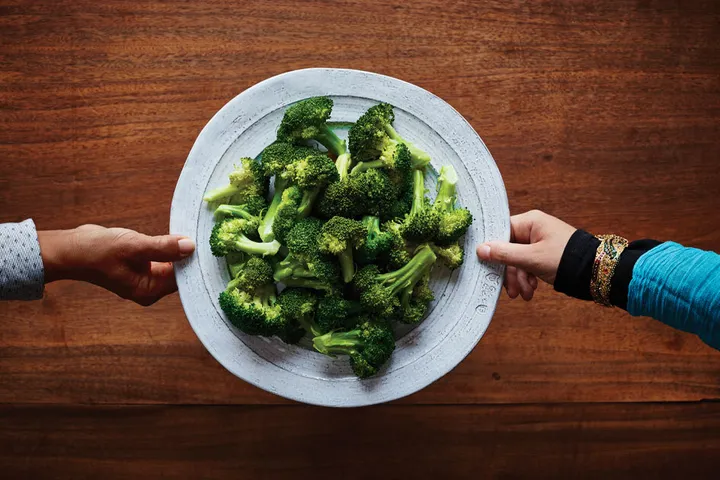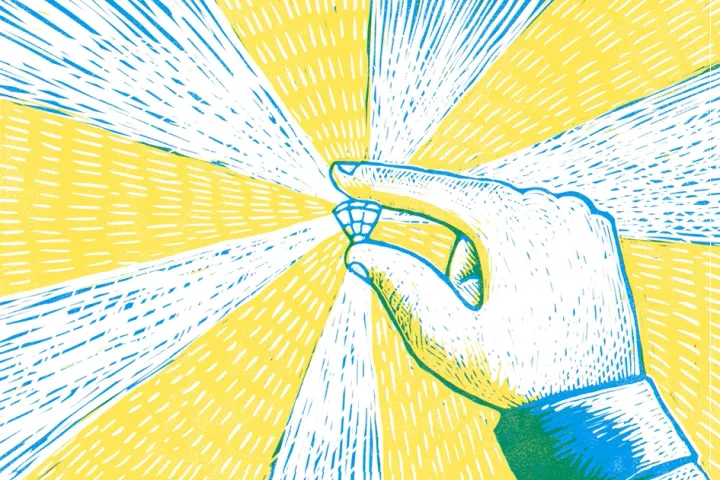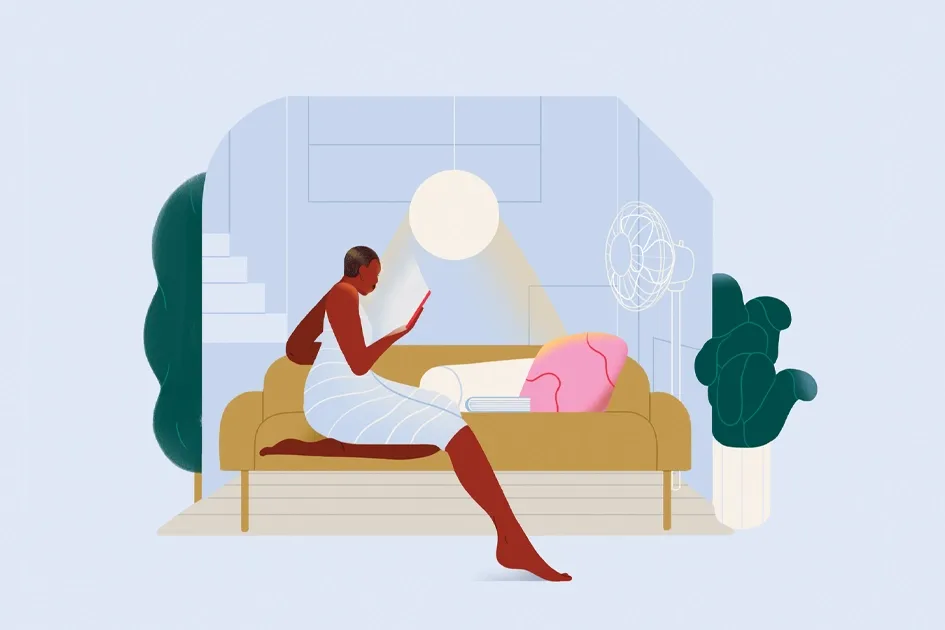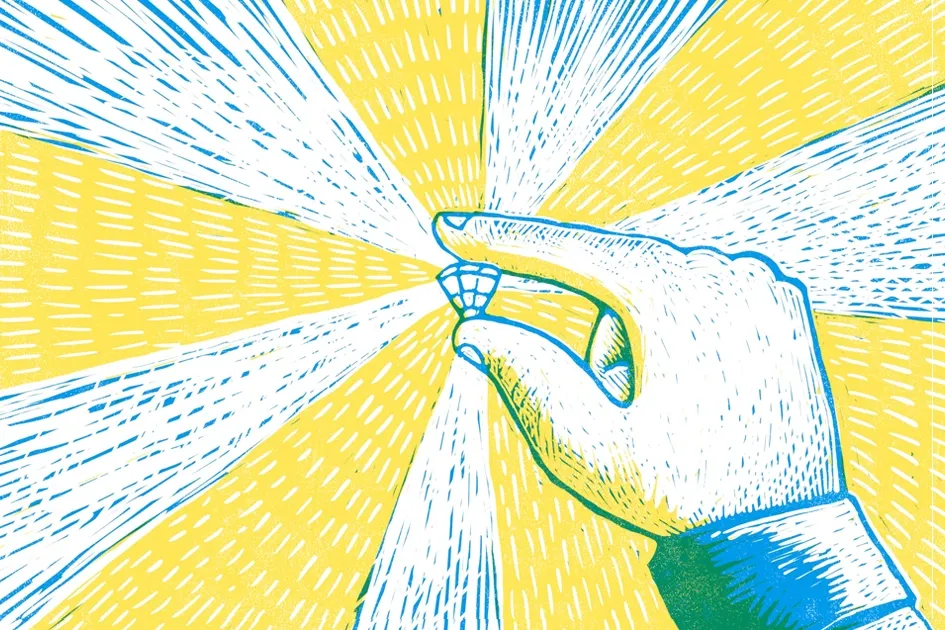My friend Gillian is the kind of woman who, when you say you have a frilly pink tulle skirt languishing in your closet, creates an opportunity for you to wear it. She’s the kind of woman who lays out the vintage china tea set, bakes her mum’s scones, and gathers beautiful artwork from other rooms in the house, just so you can sit in her kitchen in a thick knit sweater and pink tulle skirt, sipping tea and admiring art while you wear it. She’s the kind of woman who wears butterflies stitched to ivory tulle, the kind of woman you can tell a secret to and know that she will tuck it within the folds of her skirt, and it will rest there with the butterflies where it might grow wings in her safekeeping.
 Illustration by Madison Ketchum
Illustration by Madison Ketchum
For nearly four years, Gillian and I have enjoyed regular “Tea and Tulle” dates, a tradition that began on her back deck in the winter of 2020. The pandemic had just begun, and we wore puffer coats over our finery, sipping our Earl Grey under heat lamps. At the time, it was an attempt to find small pockets of joy in a deeply disorienting season. We both needed companionship and something fun to look forward to in a time that felt destabilizing to all of us. We needed joy, celebration, and beauty in our lives to counterbalance the difficulties—Gillian needed it because she’s extroverted and effervescent and social, and I needed it because, well, I’m not.
At the time, neither of us knew that 2020 was simply the dress rehearsal for what would become the most difficult three years of both of our lives. A year into our scheduled meetings, I had become so anxious in my everyday life that even an ordinary drive to pick up my daughter at school was panic-inducing. The drive across town to Gillian’s home was short, safe, and familiar enough that I managed it without needing to practice deep breathing to get there.
Then, my sister-in-law’s husband Eric was diagnosed with terminal brain cancer at the age of 46. Our family moved into support mode, and we spent weeks making meals, traveling to their home state, and watching their kids as Eric received treatment. At the same time, I began intensive trauma therapy for my anxiety, and I stripped my days to the bare essentials as we tried to cope with overlapping crises as a family. I limped into our Christmas meetup that year, weary and wearing a pair of jeans instead of my typical attire. We sat on Gillian’s deck, and I wasn’t certain I would experience joy again after so much despair. I arrived empty-handed, but that didn’t matter. Gillian spread a plate for me with minced pies, homemade whipped cream, and carrot cake. She poured strong black tea from a silver pot and added a splash of milk. We toasted to survival, both Eric’s and mine. She nourished me body and soul with her companionship that day, and I knew then that I didn’t have to carry my suffering alone in silence. My friend would hold hope for me when my arms were too weak to hold it myself.
When one of us has been cut off at the knees by an unexpected diagnosis, crisis, or family emergency, the other one of us is on our knees praying in solidarity. We’ve walked through hell together wearing velvet heels, with a teacup in one hand and a croissant in the other. We serve as compassionate witnesses to whatever is happening in each other’s life—the good, the silly, the tragic, the funny, the sad. When we spread the table to feast on tears and tiny French delicacies from the local bakery, we also make room for joy to pull up a seat.
It sounds frivolous when I tell others about it, but I have yet to meet a woman who doesn’t loudly (or sometimes bashfully) agree that she would love to have a similar practice with a family member or friend. I want to tell each one of them there is no shame in this desire; they can choose joy, too, in whatever iteration their imagination conjures for them. They need to, in fact, because it just might save them.
C. S. Lewis, no stranger to hard times and deep grief, agrees that this kind of frivolity and joy is rather serious business. Lewis writes in his book Letters to Malcolm, “Dance and game are frivolous, unimportant down here; for ‘down here’ is not their natural place. Here, they are a moment’s rest from the life we were placed here to live. But in this world, everything is upside down. That which, if it could be prolonged here, would be a truancy, is likest that which in a better country is the End of ends. Joy is the serious business of Heaven.”
Gillian and I schedule our time together regularly so there is always something to anticipate on our calendars, something to help us both take the pursuit of joy seriously when life gets hard. As poet Mary Oliver writes, “Joy is not made to be a crumb.” And I agree wholeheartedly. We aren’t meant to survive on scraps. If there’s something that brings even the smallest amount of joy, I believe we must run to it—love it, cultivate it, invite it, practice it, repeat it so that joy will become a feast strengthening us down to the very marrow of our bones.
Looking back, I’m so grateful that Gillian and I practiced joy during the great pause of the pandemic. When the challenges of the intervening years arrived, we had already crafted a practice of celebration—even when all we could celebrate was the fact that we survived life’s latest plot twist. While it may sound impractical, maybe even silly to some, when Gillian answers the door in a floor-skimming plum-colored ball gown and I unbutton my coat to reveal a spray of sequins, we mean serious business. With every clink of our teacups, we push back darkness, sadness, and grief.
When I scroll through photos of our past get-togethers, I see two women who have faced deep suffering and somehow, miraculously, turned it into a joyful, celebratory friendship. I’m so proud of us. We’re not on the other side of our hard stories, but we’re still here, feasting on joy despite everything.





